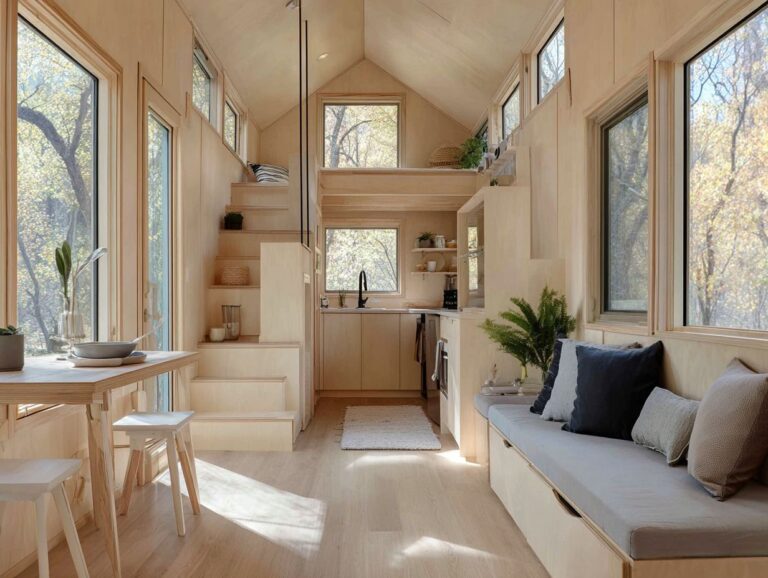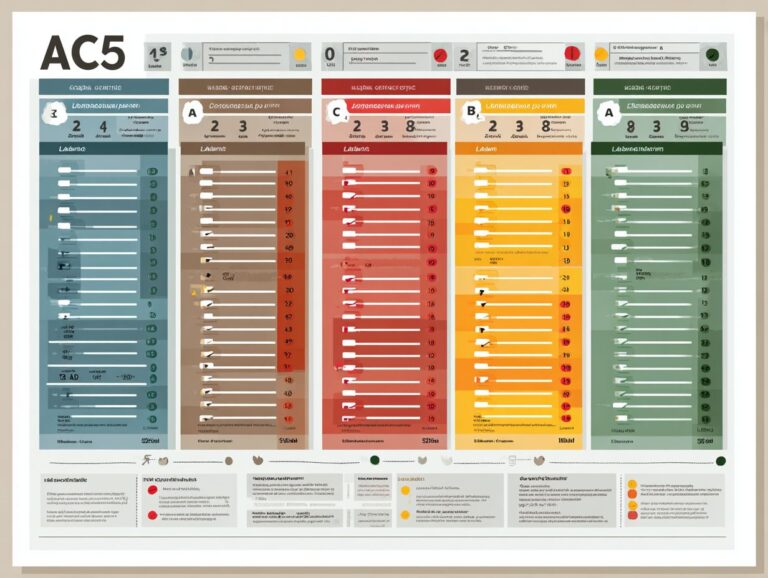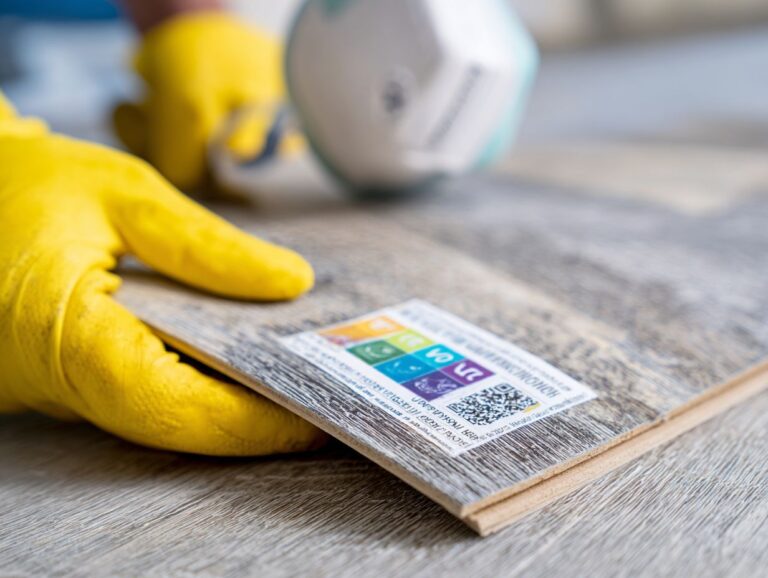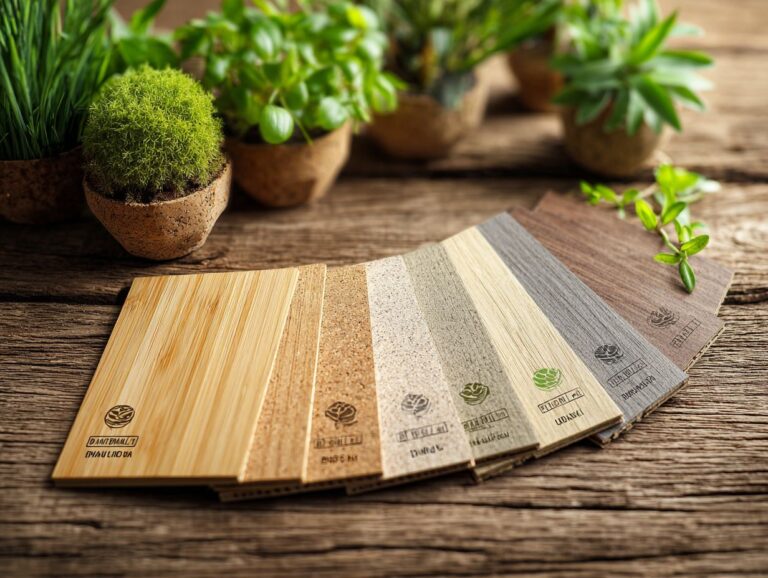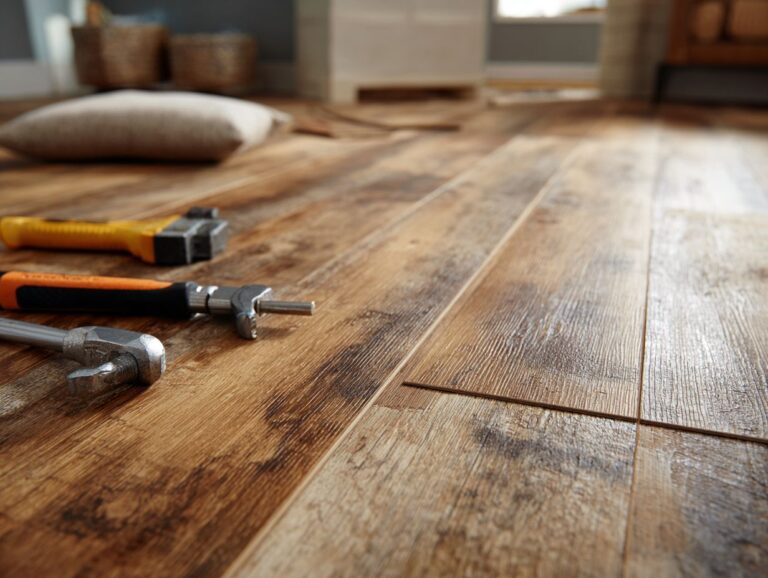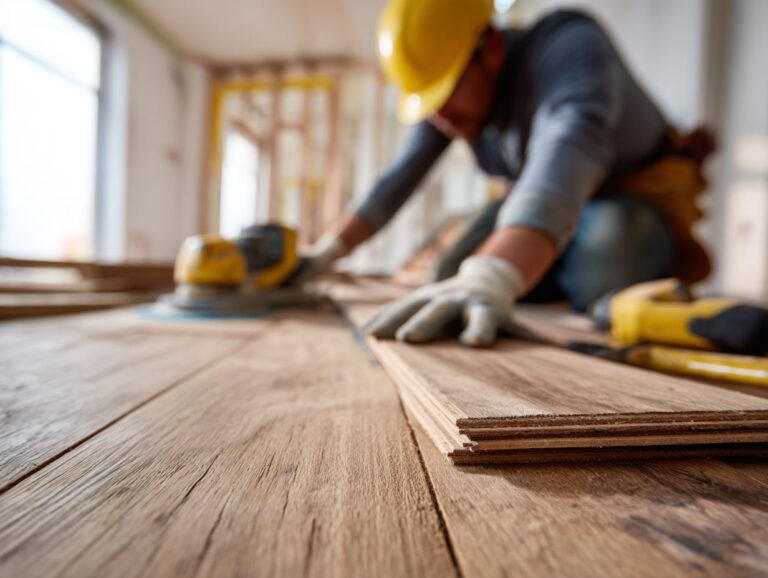Light vs Dark Flooring – Impact on Room Ambiance
Choosing between light and dark flooring is more than just a style decision; it significantly impacts your room’s ambiance. Light wood flooring, like light hardwood, creates an airy, spacious atmosphere, while dark wood flooring, often in deep tones, can exude warmth and sophistication. In this article, we’ll look at how these flooring options affect the look and comfort of your space, helping you choose the best one for your home’s interior design.
Key Takeaways:
Contents
- Understanding Light Flooring
- Understanding Dark Flooring
- Comparative Analysis: Light vs Dark Flooring
- 2025 Flooring Trends and Room Ambiance Statistics
- Practical Considerations
- Choosing the Right Flooring for Your Space
- Frequently Asked Questions
- What is the impact of light flooring on a room’s ambiance?
- How does dark flooring affect the ambiance of a room?
- Which type of flooring is better for creating a modern and sleek ambiance?
- Can dark flooring make a room appear smaller?
- What are some factors to consider when choosing between light and dark flooring?
- Can light and dark flooring be combined in a room for a unique ambiance?
Importance of Flooring in Interior Design
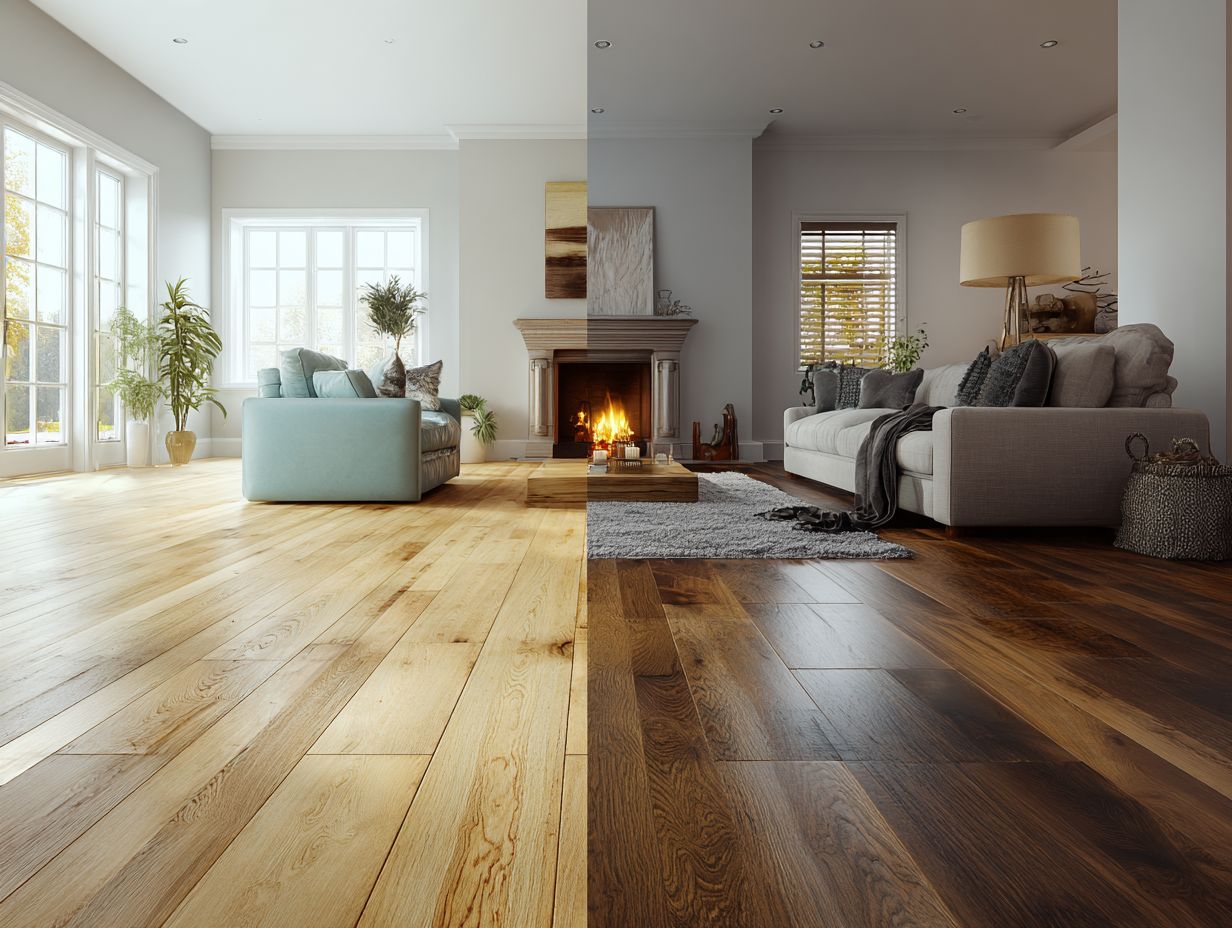
Flooring serves as the foundation of your interior design, influencing the overall decor and mood of your space.
For example, a homeowner who put in high-quality hardwood flooring immediately improved the living room’s cozy feel and classy look.
In contrast, someone opting for sleek, polished concrete achieved a contemporary industrial flair, perfectly complementing metal accents and minimalist furniture.
Consider how different materials interact with light and colors; light oak can brighten a small area, while dark tiles may create a cozy, intimate feel.
By selecting flooring that harmonizes with your chosen furnishings and wall colors, you can create a cohesive aesthetic throughout your home. For an extensive analysis of how color choices can influence space perception, delve into our deep dive on flooring color theory.
Overview of Light and Dark Flooring
Light and dark flooring each give a different style and atmosphere, fitting different design preferences.
Light flooring, such as oak and maple, can make a space feel airy and open, enhancing natural light and creating a sense of calm.
Conversely, dark flooring options, like walnut and ebony, add warmth and sophistication, grounding a room with their rich tones.
Recent consumer trends indicate that more people prefer light-colored flooring, especially homeowners who want to make small rooms appear larger.
Dark flooring remains popular in larger areas or for creating a dramatic effect, showcasing a balance of preferences in modern interior design.
Understanding Light Flooring
Light flooring choices brighten rooms and give them a roomy, calm feel. This makes them a popular pick for contemporary homes.
Types of Light Flooring Materials
Common light flooring materials include white oak, maple, and ash, each offering a distinct grain pattern and texture.
White oak costs between $6 and $10 per square foot. It is very strong and withstands moisture well, which makes it a good choice for kitchens and bathrooms.
Maple is priced between $5 to $9. It has a smooth texture and works well in living spaces because it is softer and looks nice.
Ash, ranging from $4 to $8, provides a unique, dramatic grain, perfect for high-traffic areas like hallways.
Each choice improves the look and serves particular purposes in the house.
Visual Effects of Light Flooring
Bright flooring reflects more light, which helps rooms appear more spacious.
A light-colored oak floor can bounce sunlight, brightening up kitchens or living spaces, while a gentle white laminate can make hallways brighter.
In a recent case study, a homeowner replaced dark tile with light ceramic flooring, resulting in a living room that visually expanded and felt warmer. The before-and-after photos showed how the area became brighter and more welcoming.
To achieve these effects, consider flooring options like:
- ash
- maple
- light-colored vinyl
which can greatly change your space.
Benefits of Light Flooring
Light flooring promotes a calming atmosphere while providing a sophisticated base for various decorative styles.
Picking light-colored flooring can improve the look of your home. For a seamless look, consider options like light oak or maple, which offer a warm undertone.
Vinyl planks provide a budget-friendly and waterproof alternative, ideal for high-traffic areas. For a stylish appearance, think about using natural stone tiles in light shades that add texture and are easy to clean.
Light carpets can soften spaces and offer a cozy feel, especially in bedrooms. Each choice brings unique benefits, enhancing both comfort and visual appeal.
Potential Drawbacks of Light Flooring
Despite their aesthetic appeal, light floors have drawbacks, including visible dirt and scratches that require careful maintenance.
To mitigate these challenges, establish a consistent cleaning routine. Start by sweeping or vacuuming daily to remove dust and dirt.
Use a damp microfiber mop weekly with a gentle floor cleaner specifically designed for light surfaces. Invest in quality rugs for high-traffic areas to protect against scratches.
For deeper scratches, have a wood floor repair kit on hand; it typically includes wood filler and touch-up markers to help conceal imperfections. This method keeps your light floors looking nice and makes them last longer.
Understanding Dark Flooring
Dark floors provide a timeless appearance, perfect for creating a cozy and inviting atmosphere in your home. If you’re interested in enhancing the elegance of your flooring without breaking the bank, explore some designer tricks for budget flooring that looks expensive.
Types of Dark Flooring Materials
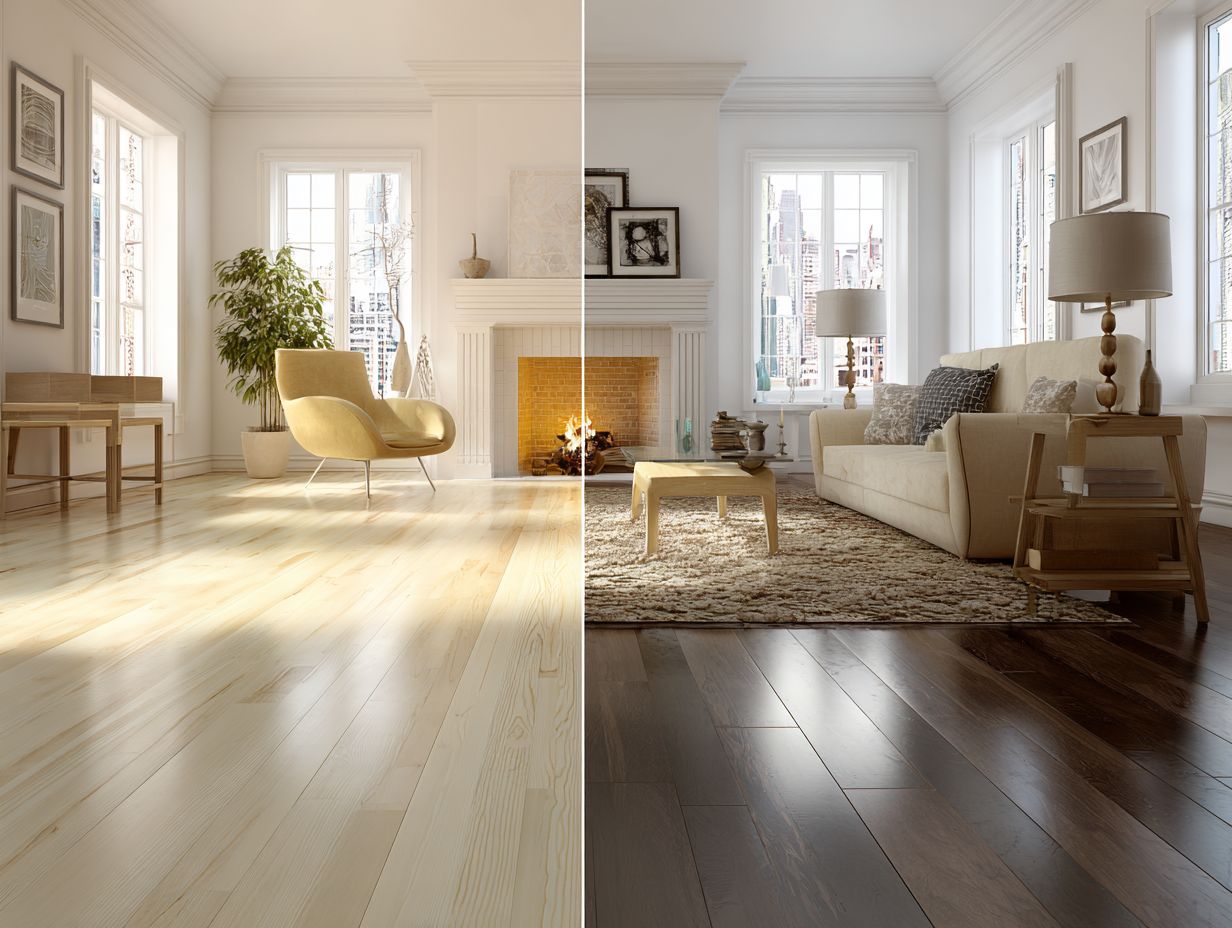
Popular dark flooring materials include walnut, mahogany, and ebony, each offering unique finishes and levels of durability.
Walnut costs between $8 and $12 per square foot. It is stylish and durable, which makes it great for areas with lots of foot traffic.
Mahogany, ranging from $9-$15, boasts a rich, deep color and is perfect for formal spaces but requires regular maintenance.
Ebony, priced between $15 and $25, is the densest wood with a deep dark color, ideal for high-end environments.
Each wood varies in hardness and care requirements, so consider your lifestyle and budget when selecting the best option for your home.
Visual Effects of Dark Flooring
Dark flooring can create a cozy ambiance, but it may also make spaces appear smaller if not balanced with light colors.
To counterbalance the effects of dark flooring, choose wall colors and furnishings wisely. For instance, painting walls in soft, light hues like pale beige or pastel colors can brighten the space, enhancing an airy feel.
Incorporating light-colored furniture, such as a white sofa or cream-colored armchairs, can help reflect light. Mirrors can make a room appear larger. Placing them carefully can increase light and give a sense of depth.
Combining these elements allows you to maintain warmth while achieving a sense of openness.
Benefits of Dark Flooring
Dark flooring is good for busy areas because it doesn’t show dirt and scratches easily.
Dark flooring can create a striking contrast in bright spaces, enhancing overall aesthetics. For a cohesive look, pair it with light-colored walls and furnishings.
Popular options like ebony-stained hardwood or rich dark laminate offer durability. When selecting, think about using mat finishes to reduce shine and improve the feel of the wood grain.
This combination brings warmth and makes cleaning easier, cutting down on the time and effort needed for upkeep.
Potential Drawbacks of Dark Flooring
While dark flooring has many benefits, it can also absorb heat and show dust and pet hair more prominently.
To address temperature regulation, consider installing insulated window treatments or utilizing ceiling fans to maintain a comfortable climate.
For cleaning, use a microfiber mop or a robot vacuum designed for pet hair to keep surfaces pristine without excessive effort. Implementing a regular cleaning schedule can prevent build-up, meaning you won’t have to spend hours scrubbing.
You might choose rugs in lighter colors to contrast with the flooring, effectively minimizing the visual appearance of dust and hair while also adding warmth to the space.
Comparative Analysis: Light vs Dark Flooring
When deciding between light and dark flooring, homeowners should think about how the look fits with their space, how the flooring will be used, and their personal taste. For those considering wood options, such as oak, maple, or cherry, understanding the characteristics of each can greatly influence the ambiance and functionality of a room.
2025 Flooring Trends and Room Ambiance Statistics
Related insight: Oak vs Maple vs Cherry Flooring – Which Wood is Best?
2025 Flooring Trends and Room Ambiance Statistics
The data on 2025 Flooring Trends and Room Ambiance Statistics provides a look at changing tastes and methods in interior design and home improvement. Even though the dataset doesn’t have specific measurements, we can use what’s happening now to guess where things are headed based on what we know about the industry.
Flooring Trends in 2025 are expected to reflect a growing consumer preference for sustainability, durability, and aesthetics. Homeowners increasingly prioritize environmentally friendly materials, leading to the popularity of options like bamboo, cork, and reclaimed wood. These materials lower environmental impact and provide special textures and patterns that improve a room’s look.
- Durability and Maintenance: With hectic schedules, people look for flooring that offers both attractiveness and easy upkeep. Vinyl and laminate flooring, known for resilience and low upkeep, continue to appeal to those who desire a high-end look at an affordable price.
- Technological Integration: People are selecting flooring that is compatible with underfloor heating and other automated home features. This integration reflects a broader trend towards seamless, functional design.
Room Ambiance is increasingly shaped by flooring choices that set the foundation for interior design themes. The texture, color, and pattern of a floor can create different moods, from cozy and inviting to sleek and modern. For example, warm-toned hardwoods can add a sense of warmth and comfort, while cool-toned tiles might impart a modern, minimalist vibe.
Overall, the 2025 Flooring Trends and Room Ambiance Statistics Show how flooring is important for creating the atmosphere in a room. As people look for choices that match their tastes and beliefs, the demand for new, attractive, and eco-friendly flooring options is expected to grow.
Impact on Room Size Perception
Light flooring can create an illusion of larger spaces, while dark flooring often makes rooms feel more intimate.
For example, choosing a light oak or beige laminate in a small living room can make it feel more open and larger.
In contrast, dark hardwood like walnut can add warmth and coziness, which is perfect for creating an inviting atmosphere in larger areas.
Think about using light flooring with lighter walls to make the space appear brighter.
Virtual room design software shows you a preview of your selections so you can be sure your space meets your expectations.
Influence on Lighting and Brightness
The choice of flooring significantly affects the overall brightness of a room, affecting how natural and artificial light is perceived.
Light-colored flooring, such as pale wood or beige tiles, reflects more light, creating an illusion of a brighter space. In contrast, dark-colored floors, like mahogany or slate, absorb light, which can make a room feel smaller and more enclosed.
To maximize brightness, consider pairing light floors with reflective furniture and light-colored walls. Putting mirrors in the right places can reflect sunlight and make the room more illuminated.
Be mindful, though, that maintenance and cleaning may vary significantly between different flooring types, potentially affecting your choice.
Effect on Mood and Ambiance
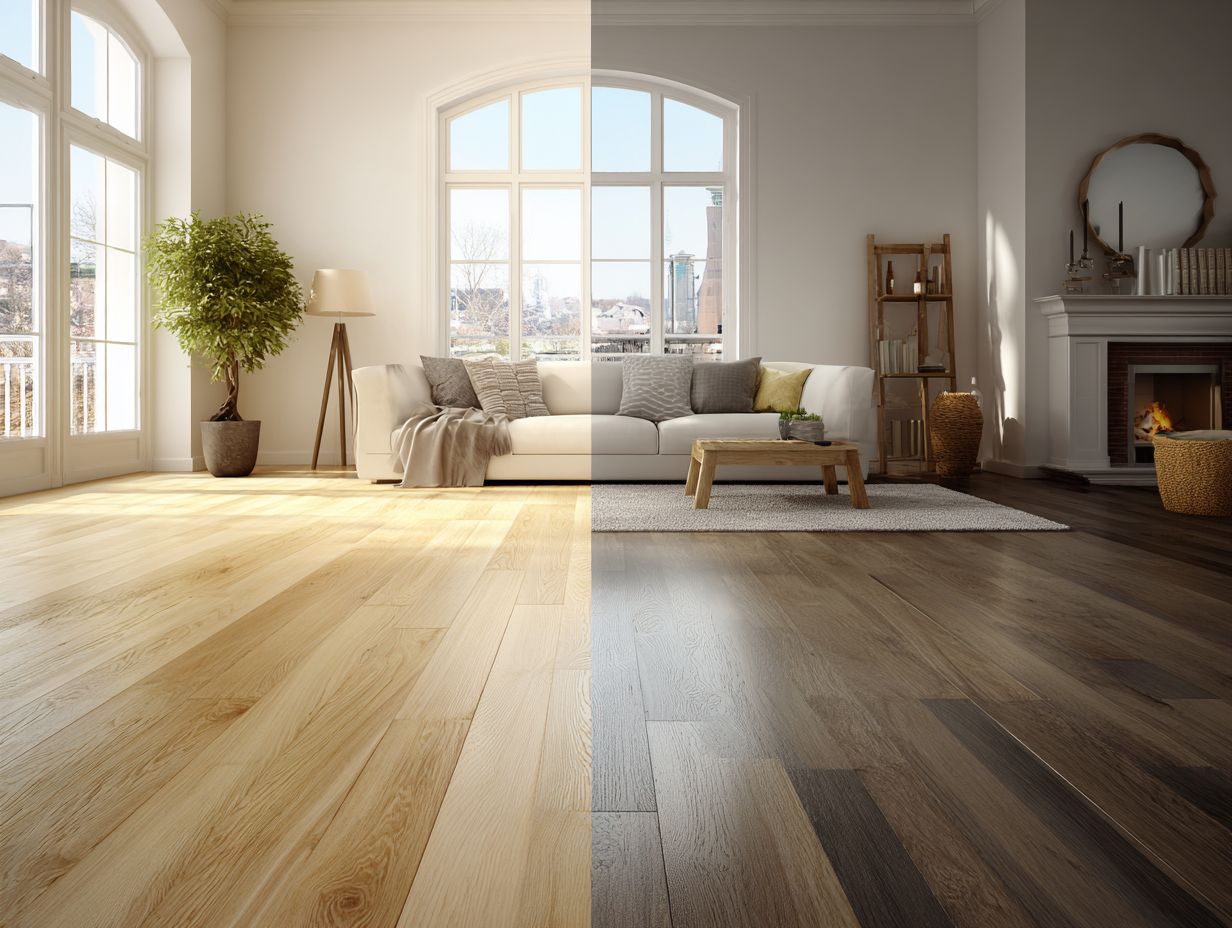
Flooring color can evoke different moods, with light shades promoting calmness and dark shades creating warmth and luxury.
Light flooring options, like soft grays and whites, can make a space feel airy and spacious, often soothing anxiety and encouraging relaxation. For instance, coastal themes with sandy beige floors are popular for creating serene retreats.
On the other hand, dark flooring, such as deep browns or rich charcoals, can add sophistication and coziness to a room. A living room with dark wood floors and warm lights creates a cozy and relaxed atmosphere, perfect for social events.
Picking the right floor color can greatly influence the mood you want in your home.
Practical Considerations
When choosing flooring, practical factors like upkeep, strength, and price can significantly affect your choice.
Maintenance and Cleaning
Regular upkeep is necessary to extend the lifespan of flooring, and consistent cleaning practices are very important.
For light flooring, a microfiber mop dampened with a mixture of vinegar and water can effectively remove dirt and shine the surface.
For heavier cleaning, a mild dish soap solution can be used monthly.
For dark flooring, use a soft broom or vacuum regularly to prevent scratches, followed by a weekly damp mop with a specialized floor cleaner. It’s important to avoid harsh chemicals that can dull the finish.
Following this routine keeps both types of flooring looking bright and in good condition.
Durability and Wear
Durability varies significantly among flooring materials, impacting their performance in high-traffic zones.
For instance, hardwood flooring, while aesthetically pleasing, may dent or scratch easily. Choosing tougher woods like oak or hickory increases durability.
In contrast, laminate offers a budget-friendly, scratch-resistant option but lacks the warmth of natural wood. Luxury vinyl planks are a good choice because they can resist water and are long-lasting, which makes them suitable for kitchens or bathrooms.
When picking flooring, think about your surroundings and how much foot traffic there is. For houses with pets, go for materials that resist scratches, such as laminate or luxury vinyl, for durability and easier upkeep.
Cost Implications
Budget considerations are essential when choosing flooring, as materials can range widely in price and installation costs.
For instance, light flooring like laminate can cost between $1 to $3 per square foot, while installation fees might add another $2 to $4 per square foot.
Darker options, such as hardwood, typically range from $5 to $10 per square foot, with installation costs averaging $4 to $6 per square foot.
Although dark flooring might be more expensive initially, it is durable and maintains its appearance over time, potentially increasing the value of your property later on.
Think about lasting advantages, like reduced upkeep and improved resale value, when choosing.
Choosing the Right Flooring for Your Space
Choosing the right flooring means looking at your taste, how the room is used, and how different materials fit with your home’s design.
Assessing Room Functionality
Knowing the purpose of each room is important for choosing the most suitable flooring material for that area.
For example, high-traffic areas like hallways are best suited for durable options such as laminate or luxury vinyl, which can withstand wear and tear.
In contrast, moisture-prone spaces like bathrooms need water-resistant materials such as porcelain tile or vinyl. A common mistake is placing hardwood in basements, where humidity can warp the wood.
Always consider the room’s specific needs-durability for playrooms, warmth for bedrooms, and style for living areas-to choose the optimal flooring that balances functionality and aesthetics.
Complementing Existing Decor
Make sure the new flooring matches your current decor and fits your personal style.
Start by evaluating your wall colors and furniture styles. For example, if you have warm, earth-toned walls and rustic wooden furniture, consider options like warm oak or maple flooring to create a cohesive look.
In a modern space with cool gray walls, sleek options like polished concrete or gray laminate would work well. Use samples to visualize how various flooring materials interact with light and other design elements in your home.
This hands-on approach can guide your choices toward a harmonious environment.
Final Thoughts on Flooring Choice
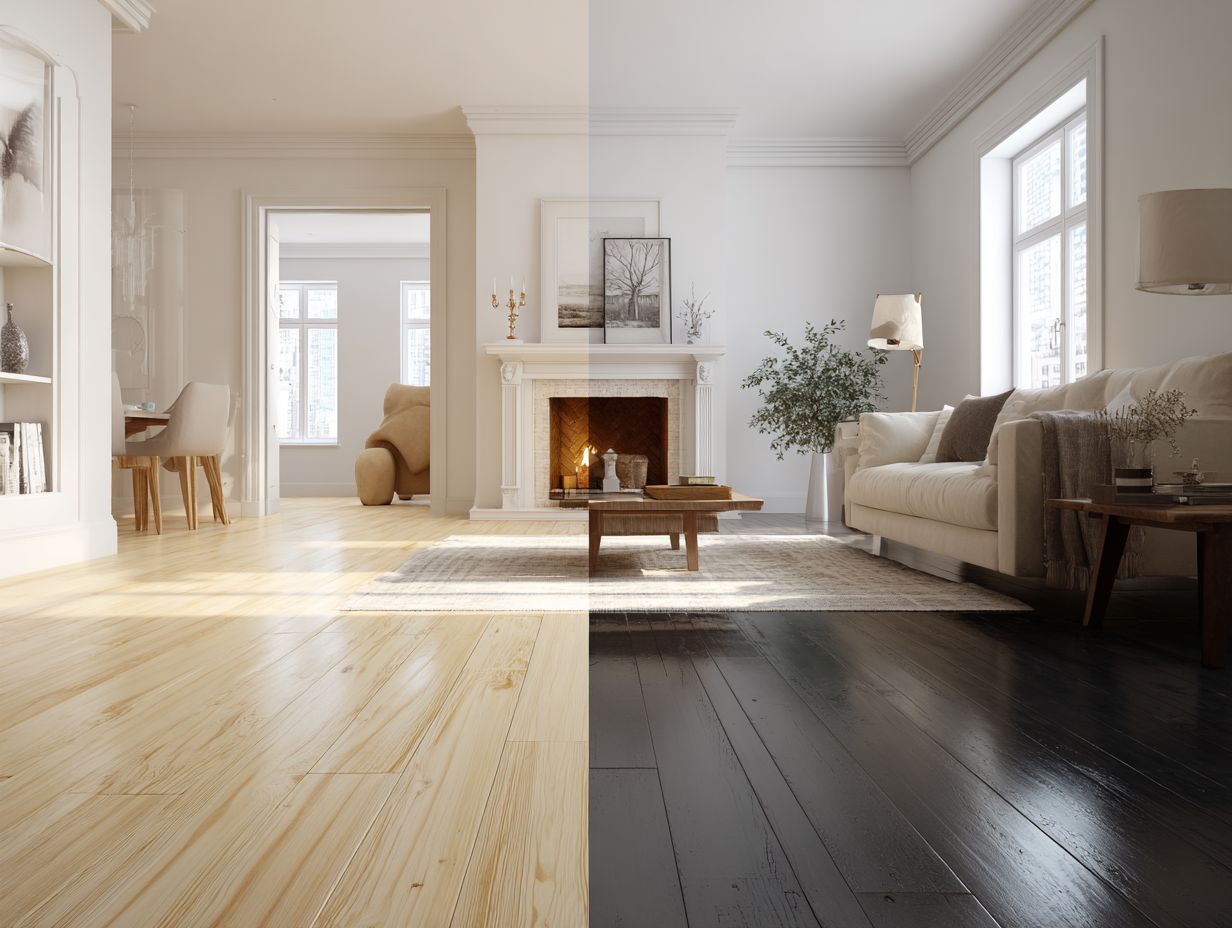
Consider your style preference, how much you walk on it, and what you plan for your home when choosing flooring.
Consider the durability of materials like hardwood, which offers timeless elegance but requires regular maintenance. Alternatively, porcelain tiles provide a sleek, water-resistant option ideal for high-traffic areas.
Check out luxury vinyl planks for a mix of comfort and style. They look like real wood and stone but don’t need much care. Assess your lifestyle: if you have pets or children, more resilient choices may be necessary.
Find nearby workers for dependable setup, and plan for present needs and later upgrades. This approach will help you achieve a harmonious balance.
Frequently Asked Questions
What is the impact of light flooring on a room’s ambiance?
Light-colored flooring can make a room appear brighter and larger, which is why it’s often chosen for small or dark spaces. It also reflects natural light, creating a more open and airy atmosphere.
How does dark flooring affect the ambiance of a room?
Dark flooring can create a cozy and intimate atmosphere in a room. It can also make a room feel warmer and more inviting, perfect for creating a comfortable and luxurious space.
Which type of flooring is better for creating a modern and sleek ambiance?
Light flooring is typically better for creating a modern and sleek ambiance. Its clean and bright appearance can make a room feel more open and contemporary, perfect for achieving a minimalist or modern aesthetic.
Can dark flooring make a room appear smaller?
Yes, dark flooring can make a room feel smaller and more closed off. This is why it is often recommended for larger rooms or spaces with high ceilings, as it can create a visually balanced and cozy atmosphere.
What are some factors to consider when choosing between light and dark flooring?
Some factors to consider are the size of the room, the amount of natural light, the style of the room, and personal preference. Light flooring is great for creating a bright and spacious feel, while dark flooring is ideal for creating a warm and inviting atmosphere.
Can light and dark flooring be combined in a room for a unique ambiance?
You can mix light and dark flooring to give a room a distinct atmosphere. This can be done in different ways, such as starting with a light floor and adding darker accents, or mixing light and dark tiles or planks for a detailed design.
